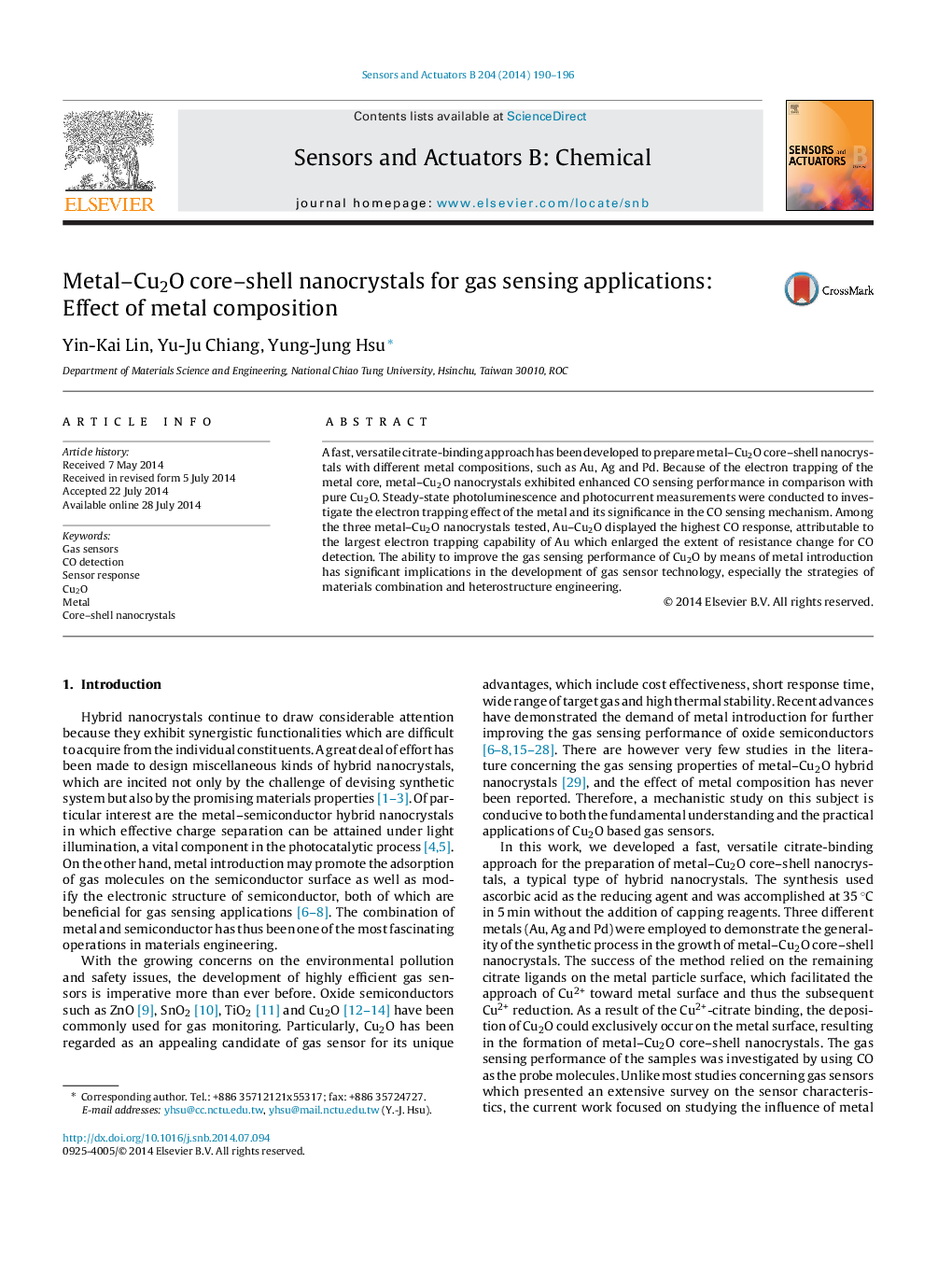| Article ID | Journal | Published Year | Pages | File Type |
|---|---|---|---|---|
| 741969 | Sensors and Actuators B: Chemical | 2014 | 7 Pages |
•A citrate-binding approach was used to prepare metal–Cu2O core–shell nanocrystals.•The sensing performance of Au–Cu2O, Ag–Cu2O and Pd–Cu2O nanocrystals was compared.•Au–Cu2O nanocrystals achieved the highest CO response.•The electron trapping capability of the metal affected the sensor response.
A fast, versatile citrate-binding approach has been developed to prepare metal–Cu2O core–shell nanocrystals with different metal compositions, such as Au, Ag and Pd. Because of the electron trapping of the metal core, metal–Cu2O nanocrystals exhibited enhanced CO sensing performance in comparison with pure Cu2O. Steady-state photoluminescence and photocurrent measurements were conducted to investigate the electron trapping effect of the metal and its significance in the CO sensing mechanism. Among the three metal–Cu2O nanocrystals tested, Au–Cu2O displayed the highest CO response, attributable to the largest electron trapping capability of Au which enlarged the extent of resistance change for CO detection. The ability to improve the gas sensing performance of Cu2O by means of metal introduction has significant implications in the development of gas sensor technology, especially the strategies of materials combination and heterostructure engineering.
Graphical abstractFigure optionsDownload full-size imageDownload as PowerPoint slide
